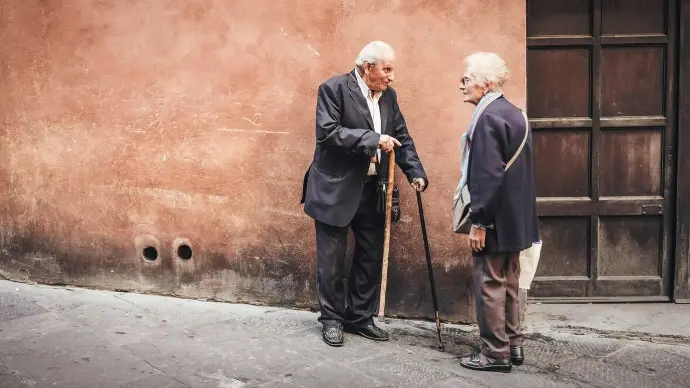Ageism (or discrimination on grounds of age) is the set of stereotypes and prejudices that assume that all people of a certain age think and behave in the same way or have the same needs or interests. Ageist behaviours include, for example, excluding or making older people invisible, infantilising them in treatment or assuming that they are fragile or less capable simply because they are a certain age. In this article we present a summary.
What is ageism?
Age is one of the first characteristics we notice in other people. Ageism arises when age is used to categorize and divide people by attributes that cause harm, disadvantage or injustice and undermine intergenerational solidarity. Ageism harms our health and well-being and is a major barrier to effective policymaking and action on healthy ageing, as recognized by World Health Organization (WHO) Member States in the Global Strategy and Plan of Action on Ageing and Health and the Decade of Healthy Ageing (2021–2030).
Types of ageism
This discrimination is present in many aspects of our daily lives. This means that we can differentiate 4 types of ageism:
- Institutional ageism: this is the one that is exercised by institutions through services, regulations and laws. It is also the one that institutions do through their language.
- Unconscious ageism at a personal level: it encompasses all the words and actions that people do on a personal level that discriminate based on age without realising it. This is due to a lack of deconstruction in this aspect. In order not to exercise it, we must analyse ourselves.
- Intentional ageism: when older people are intentionally discriminated against. It is usually exercised when someone wants to take advantage of the person due to their vulnerability.
- Examples of ageism, prejudices and stereotypes
Age discrimination is rooted in our society and is transmitted through recurring topics that automatically place ageing and older people in a position of inferiority, without taking into account their capabilities and personal situation. This can be seen in many of the most common discriminatory attitudes:
“All older people are inactive.”
False! And it would be a big mistake to think like that. There are currently about 600 million older people in the world, and their number is expected to double in the coming years to reach 2 billion by 2050. In many countries, the majority of people over 60 are in excellent health and very physically active.
Medical advances and the evolution of our civilization allow us to foresee a generation of retirees who look forward to the end of their professional activity in very good shape so that they can fully devote themselves to their leisure time and enjoy life. Some of them even continue to work in family businesses or provide essential support to their sons and daughters in caring for their grandchildren.
“Older people do not understand technology and are incapable of using it.”
This is digital ageism. This preconceived idea is widespread and strongly rooted among younger generations raised in the digital age. New technologies are one of the sectors in which there is the most discrimination and prejudice against older people.
“At your age, you can’t do that.”
This is protective ageism. Discriminatory attitudes are not necessarily the result of bad intentions. Age discrimination often manifests itself in comments or behaviors that are benevolent in origin, but which are overprotective of older people and deprive them of their freedoms.
These examples of ageism are just some of the many that exist. We invite you to analyze your comments and your daily life in order to detect more situations in which we are discriminating against older people and to be able to correct it.
Dependency and ageism: implications for care
This discrimination is exercised towards all older people, but with special weight in those without autonomy. When dependency appears, the older person is usually undervalued. Not being able to take care of oneself in one aspect does not imply not being able to do so in general. Elderly people should be helped with whatever they need, but encouraged to maintain their independence and decision-making ability if they can. Denying them that is ageism.
Therefore, it is very important that home care is tailored to each person, since generalized care can lead to stereotypes and discrimination.
Effects of ageism on well-being
According to the WHO, ageism has a negative impact on people's health and well-being. In the case of older people, it has effects on:
- Lower life expectancy and worse physical, mental and emotional health.
- Lower well-being and quality of life.
- Greater social isolation and loneliness.
- Increased poverty and economic insecurity.
- Greater risk of suffering cases of violence and abuse.
Strategies to reduce ageism
Ageism causes harm, disadvantages and injustices, and older people are the group that suffers the most from its effects. Reducing ageism requires that institutions, companies, organisations and the media adopt transformation strategies that value the social contribution of older people. These include the following:
- Strengthen laws that guarantee human rights and the rights of older people.
- Establish surveillance to ensure the application of rules to prevent ageism.
- Launch educational initiatives that help improve empathy and reduce existing prejudices.
- Promote interaction between people of different generations to generate respect, tolerance and recognition.
- Generate changes in the use of language to eradicate words and expressions that contribute to perpetuating ageism.

 IHRO NEWS
IHRO NEWS